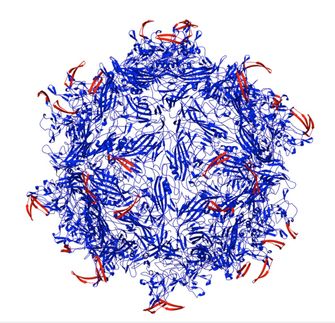Lowering costs for higher-cost medicare patients through better outpatient care may be limited
In an analysis that included a sample of patients in the top portion of Medicare spending, only a small percentage of their costs appeared to be related to preventable emergency department visits and hospitalizations, limiting the ability to lower costs for these patients through better outpatient care, according to a study in the June issue of JAMA.
"High and increasing health care costs are arguably the single biggest threat to the long-term fiscal solvency of federal and state governments in the United States. One compelling strategy for cost containment is focusing on the small proportion of patients in the Medicare programs who account for the vast majority of health care spending. We know from prior work that Medicare spending is highly concentrated: 10 percent of the Medicare population accounts for more than half of the costs to the program," according to background information in the article.
The biggest sources of spending among high-cost beneficiaries are those related to acute care: emergency department (ED) visits and inpatient hospitalizations. "As a result, many interventions targeting high-cost patients have focused on case management and care coordination, aiming to prevent ED visits and hospitalizations for conditions thought amenable to improvement through high-quality outpatient management programs. The premise behind these and related interventions is that high-quality outpatient care should reduce unnecessary hospitalizations for high-cost patients. However, there are few data on the proportion of inpatient hospitalizations among high-cost patients that are potentially preventable," the authors write.
Karen E. Joynt, M.D., M.P.H., of the Harvard School of Public Health, Boston, and colleagues conducted a study to quantify the preventability of high-cost Medicare patients' acute care spending. The researchers summed standardized costs for each inpatient and outpatient service contained in standard 5 percent Medicare files from 2009 and 2010 across the year for each patient in their sample, and defined those in the top decile (one of ten groups) of spending in 2010 as high-cost patients and those in the top decile in both 2009 and 2010 as persistently high-cost patients. Standard algorithms were used to identify potentially preventable emergency department visits and acute care inpatient hospitalizations. A total of 1,114,469 Medicare fee-for-service beneficiaries 65 years of age or older were included.
The high-cost patient group, which included 10 percent of the patients in this sample, were older, more often male and more often black. This group was responsible for 32.9 percent of ED costs and 79.0 percent of inpatient costs. Within the high-cost group, 42.6 percent of ED visits were deemed to be preventable. These visits were associated with 41 percent of the ED costs within this group. The most common reasons for preventable hospitalization in high-cost patients were congestive heart failure, bacterial pneumonia, and chronic obstructive pulmonary disease.
Within the high-cost group, 9.6 percent of hospital costs were attributable to preventable hospitalization. Within the non-high-cost group, though overall spending was significantly lower, a higher proportion of inpatient costs were potentially preventable (16.8 percent).
"Comparable proportions of ED spending (43.3 percent) and inpatient spending (13.5 percent) were preventable among persistently high-cost patients. Regions with high primary care physician supply had higher preventable spending for high-cost patients," the authors write.
"The biggest drivers of inpatient spending for high-cost patients were catastrophic events such as sepsis, stroke, and myocardial infarction, as well as cancer and expensive orthopedic procedures such as spine surgery and hip replacement. These findings suggest that strategies focused on enhanced outpatient management of chronic disease, while critically important, may not be focused on the biggest and most expensive problems plaguing Medicare's high-cost patients."
The researchers add that their "findings suggest that a complementary approach to saving money on acute care services for high-cost patients may be to additionally focus on reducing per-episode costs for high-cost disease entities through clinical innovation and care delivery redesign."




















































